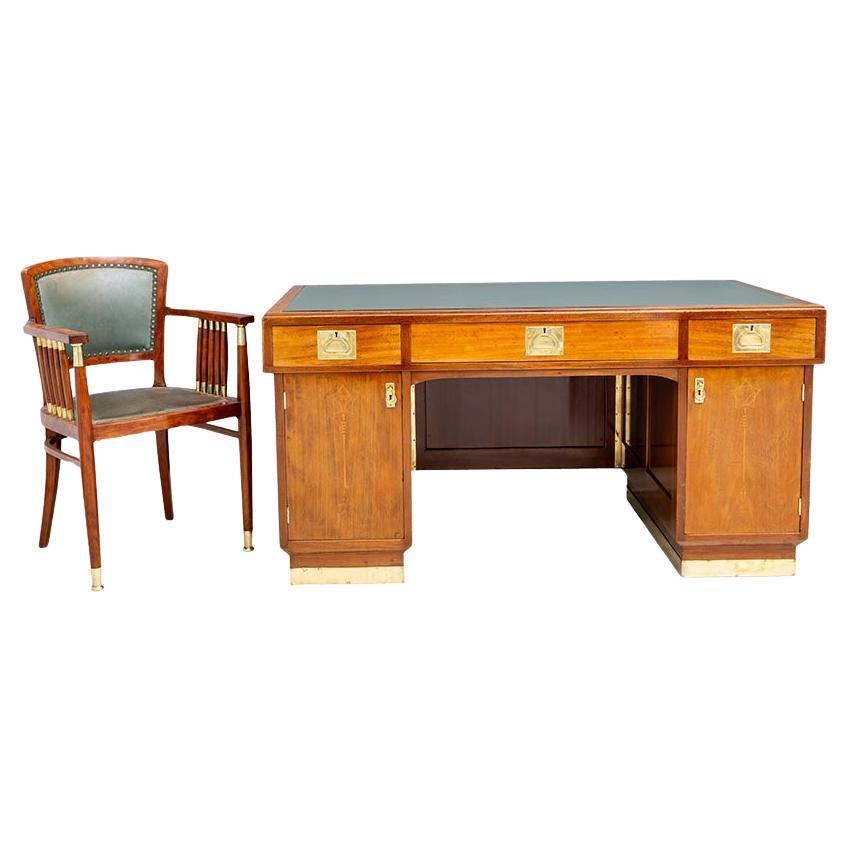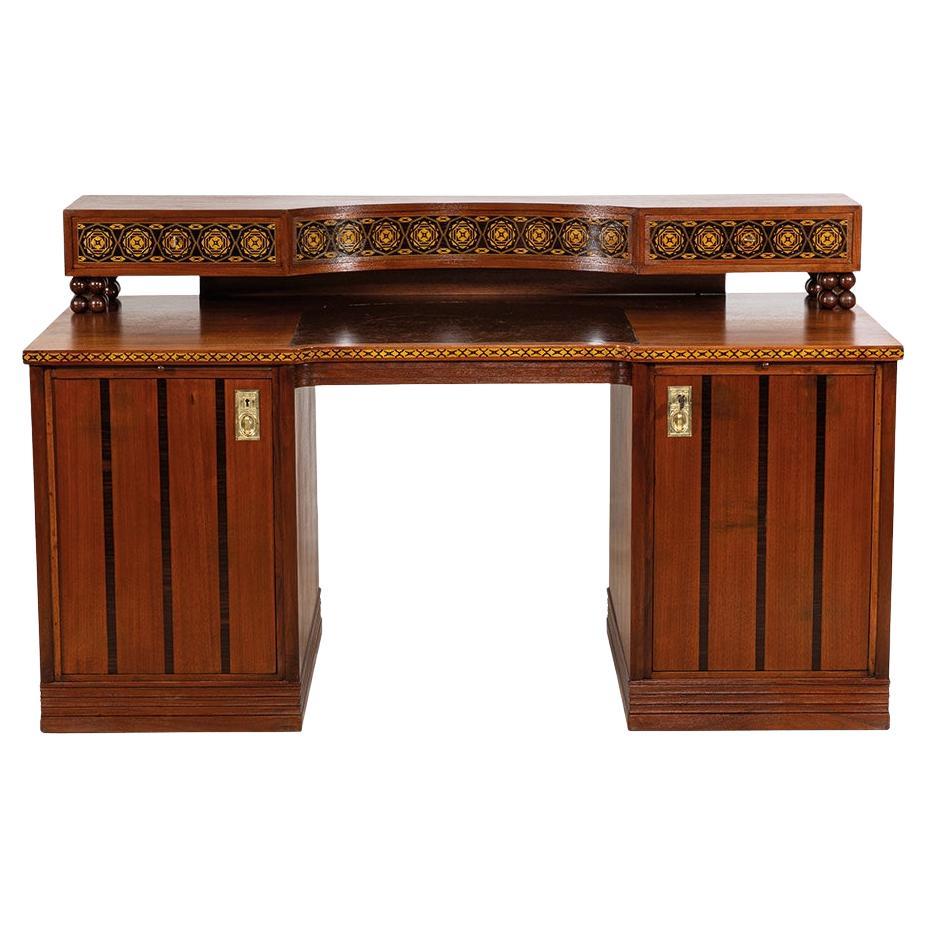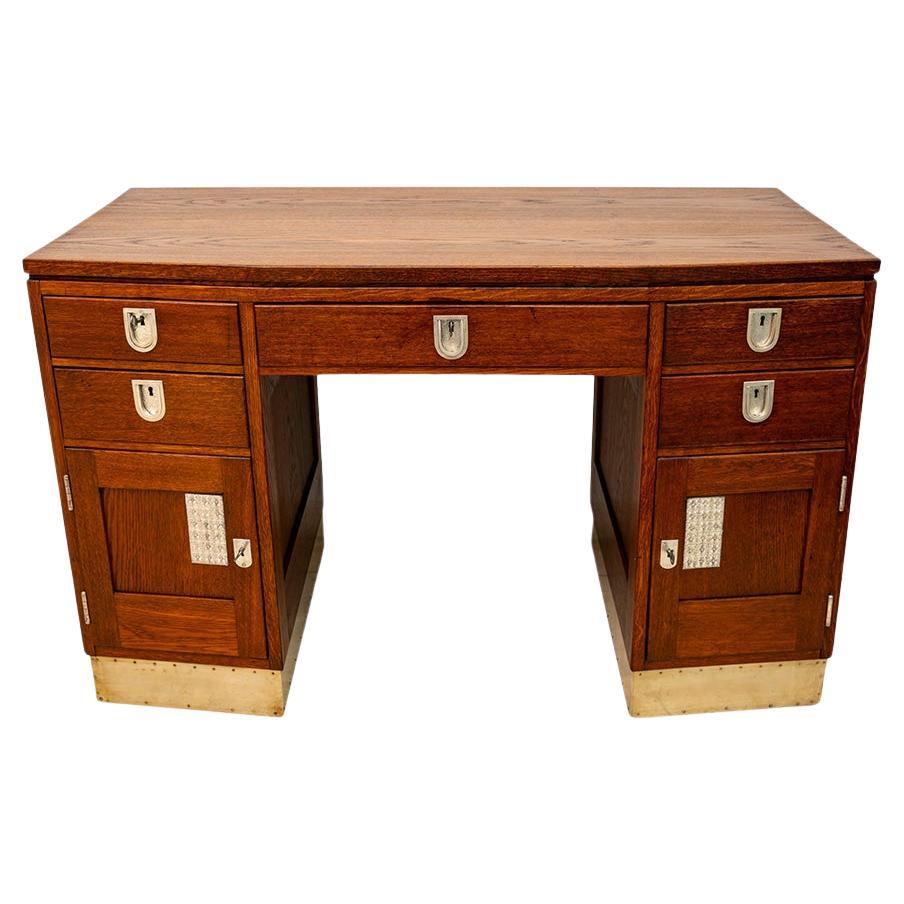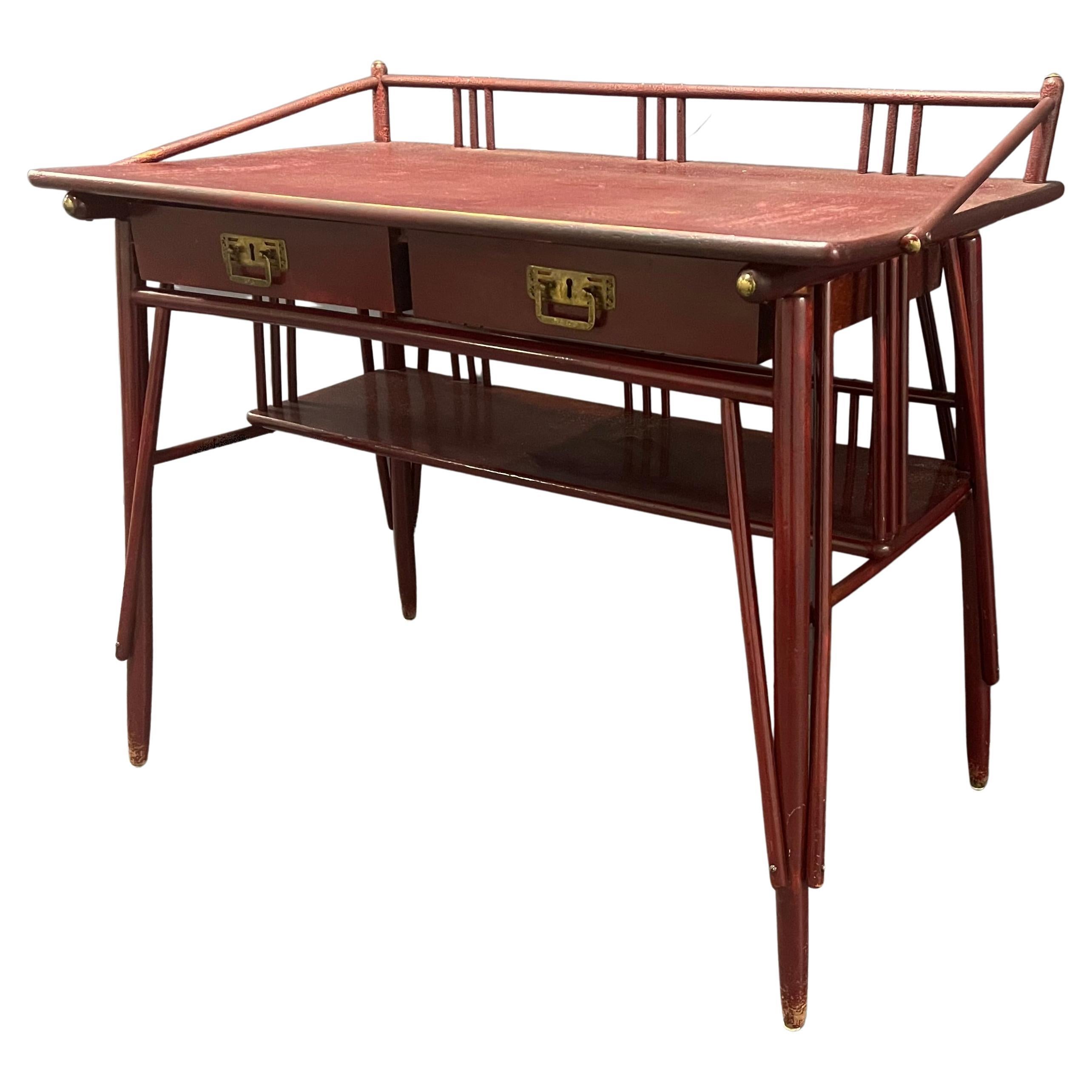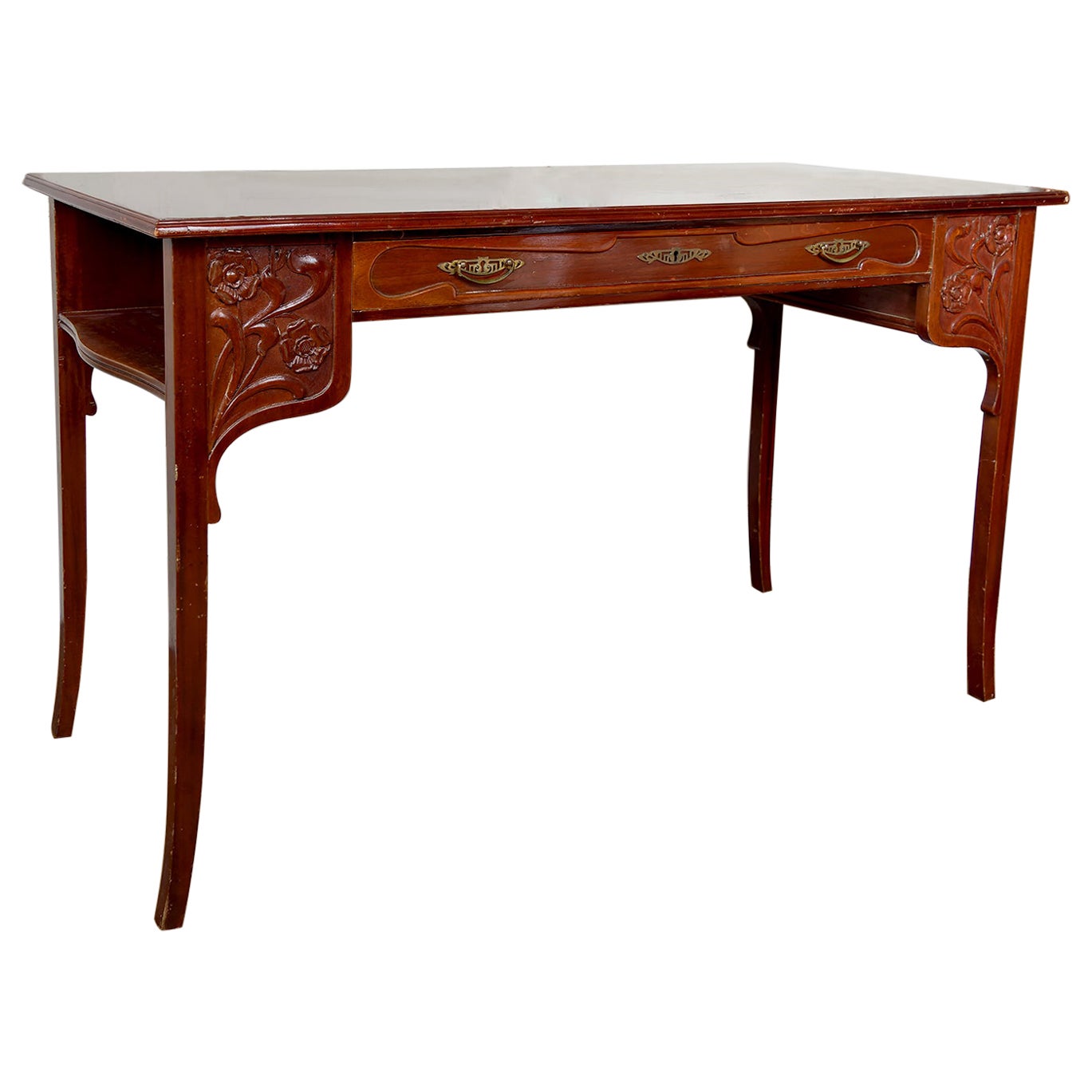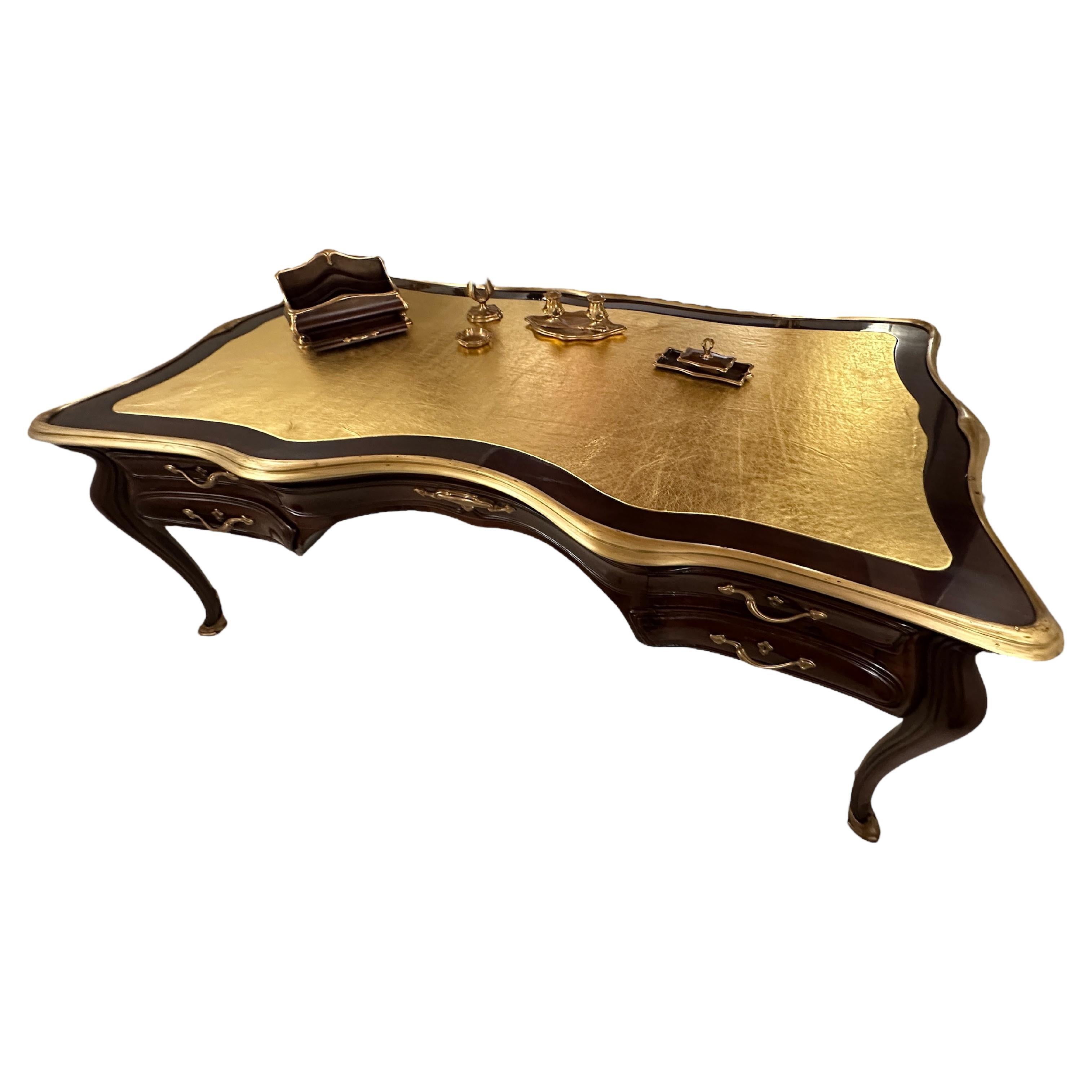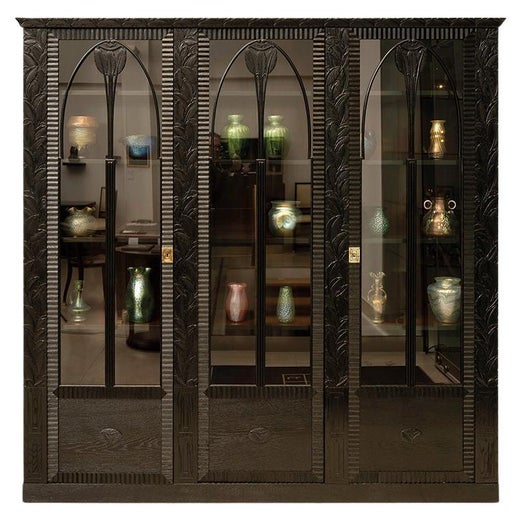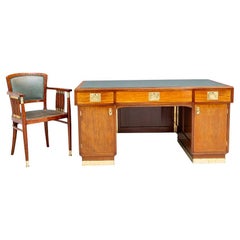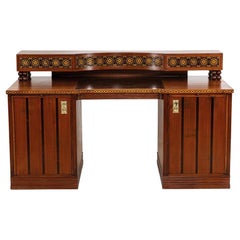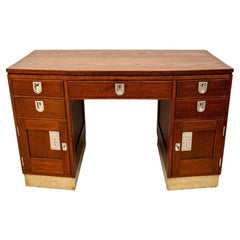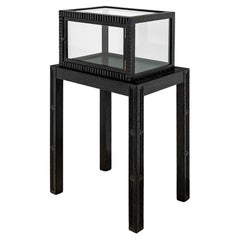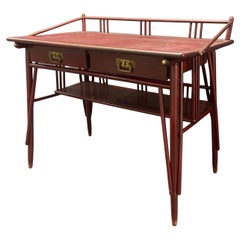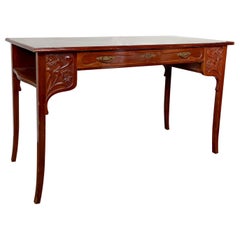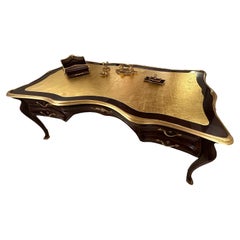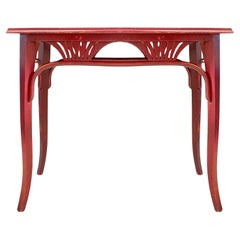Articoli simili a Viennese Art Nouveau desk with armchair Hans Bolek August Ungethüm 1913
Vuoi altre immagini o video?
Richiedi altre immagini o video al venditore
1 di 16
Viennese Art Nouveau desk with armchair Hans Bolek August Ungethüm 1913
74.750 €per set|IVA inclusa
Informazioni sull’articolo
technique:
desk: spruce body, swamp oak veneer, stained black and semi-matt polished; chair: solid swamp oak, stained black and semi-matt polished; new fabric upholstery
original key, marked "A. Ungethüm"
bibliography: Interior from the winter exhibition 1913/14 at MAK; photograph of a room design by Hans Bolek, executed by August Ungethüm, Möbelfrabrik August Ungethüm, MAK Inv. nr. KI 7905-13 ; Innendekoration: mein Heim mein Stolz, Heft 25, 1914, S. 110 ; Kunst & Handwerk, Vol. 12, 1913, p. 629; Deutsches Volksblatt 11. November 1913, S. 6 ; Neues Wiener Tagblatt, 22. November 1913, p. 33, yearly report 1913 Austrian Museum of Art and Industry (ÖMKI), p. 4.
The furniture in this extraordinary study was designed in 1913 by Hans Bolek, an extremely talented student of the legendary Josef Hoffmann, and was impressively presented at the renowned Winter Exhibition of the Austrian Museum of Art and Industry (ÖMKI) in 1913/1914, together with a living room. The masterful craftsmanship was carried out by August Ungethüm, who was also trained
under Hoffmann and was known for his excellent craftsmanship. International interior design magazines and daily newspapers praised the room at the time for its groundbreaking style and craftsmanship, which brought it attention and recognition far beyond Austria's borders.
The entire study was purchased on November 6, 1913, by the then Minister of Public Works, Baron Ottokar Trnka von Laberon, further underscoring its high cultural and political value. Hans Bolek's work during his training period comprises only a few complete room furnishings, which makes this ensemble an exceptionally rare and art-historically significant testimony to Viennese Art Nouveau. The furniture is characterized by a clear, elegant design that was strongly influenced by Josef Hoffmann's style. Particularly noteworthy is the harmonious combination of strictly geometric forms with flowing floral elements— two seemingly contradictory styles that Bolek
brought into aesthetic harmony with particular sensitivity and skill. This stylistic synthesis emphasizes the Viennese Art Nouveau's pursuit of a combination of aesthetic purity, decorative expressiveness, and functional clarity.
The ensemble consists of a representative desk with elegant fittings and a matching armchair made of solid oak, an impressive cabinet display case, and a stylish table display case or humidor. All pieces of furniture, except for the chair, are made of solid spruce wood and covered with high-quality swamp oak veneer. The surfaces have been carefully stained and finished with a silk matt shellac polish, giving them a subtle, elegant sheen. A special bonus is the existence of the original keys, which bear the company name “A. Ungethüm.” Particularly impressive is the cabinet display case, whose interior is lined with precious mahogany veneer, giving the display case a warm and deep aura. A historical photo of part of this ensemble is in the renowned collection of the Museum of Applied Arts (MAK) in Vienna and was published in various contemporary magazines during Bolek's lifetime. This unique group of furniture represents the spirit of late Viennese Art Nouveau in the highest quality and incomparable elegance and is exemplary of this period at the turnof the stylistic eras.
- Creatore:Hans Bolek (Designer),August Ungethüm Kunstmöbel-Fabrik (Ebanista)
- Dimensioni:Altezza: 77 cm (30,32 in)Larghezza: 160 cm (63 in)Profondità: 79,5 cm (31,3 in)
- Venduto come:Set di 2
- Stile:Jugendstil (Nello stile di)
- Materiali e tecniche:Peccio,Mordenzato
- Luogo di origine:
- Periodo:1910-1919
- Data di produzione:1913
- Condizioni:Riparato. Rivestito. Rifinito. Usura compatibile con l’età e l’utilizzo. Lievi mancanze.
- Località del venditore:Klosterneuburg, AT
- Numero di riferimento:Venditore: 10751stDibs: LU5830246954392
Hans Bolek
Hans Bolek fu uno dei fondatori del cosiddetto Österreichischer Werkbund nel 1914. Lavorò insieme a Josef Hoffmann nel periodo 1939-41.
Informazioni sul venditore
5,0
Venditore professionale selezionato
Ogni venditore supera rigorosi standard di autenticità e affidabilità
Fondazione nel 2013
Venditore 1stDibs dal 2021
17 vendite su 1stDibs
- SpedizioneRecupero del preventivo…Spedizione da: Vienna, Austria
- Politica di reso
Alcune parti di questa pagina sono state tradotte automaticamente. 1stDibs non può garantire che le traduzioni siano corrette. L’inglese è la lingua predefinita del sito.
Garanzia di autenticità
Nell’improbabile caso in cui si verifichi un problema con l’autenticità di un articolo, contattaci entro un anno per ottenere un rimborso completo. DettagliGaranzia di rimborso
Se il tuo articolo non corrisponde alla descrizione, è danneggiato durante il trasporto o non arriva, contattaci entro 7 giorni per un rimborso completo. DettagliAnnullamento entro 24 ore
Hai un periodo di tolleranza di 24 ore per annullare il tuo acquisto, senza necessità di fornire spiegazioni.Venditori professionali selezionati
I nostri venditori di livello internazionale devono aderire a rigorosi standard di servizio e qualità, garantendo l’integrità delle inserzioni.Garanzia miglior prezzo
Se scopri che un venditore ha pubblicato altrove lo stesso articolo a un prezzo più basso, applicheremo lo stesso prezzo.Consegna globale affidabile
La nostra rete di vettori leader del settore offre opzioni di spedizione specializzate in tutto il mondo, inclusa la consegna personalizzata.Altro da questo venditore
Mostra tuttoScrivania e poltrona Jugendstil viennese J.W. Müller ca. 1905
Di J.W. Müller
Dimensioni del tavolo: H. 78 cm x L. 152,5 cm x P. 83 cm Poltrona: H. H. 90 cm x L. 58 cm x P. 52 cm
K.K. K. La Hoftischlerei J.W. Müller era uno dei laboratori leader. Presentava...
Categoria
XX secolo, Austriaco, Art Nouveau, Scrivanie e scrittoi
Materiali
Mogano
Art Nouveau desk by Matthias Feller manufactured by M. Ballin München ca. 1912
Desk, Matthias Feller (design), M. Ballin München (manufacturer), ca. 1912
marked twice with "M. Ballin München"; bib.: "Innendekoration - mein Heim, mein Stolz", 1912, S. 200.
tec...
Categoria
Vintage, Anni 1910, Austriaco, Jugendstil, Scrivanie e scrittoi
Materiali
Noce
Scrivania Jugendstil disegnata da August Knobloch's Nachfolger ca. 1908
Questa squisita scrivania è stata realizzata dalla fabbrica di mobili August Knobloch's Nachfolger. Nel periodo intorno al 1900, la fabbrica di ebanisteria apparteneva alla cerchia d...
Categoria
Di antiquariato/d’epoca, Inizio Novecento, Austriaco, Jugendstil, Scriva...
Materiali
Alpaca, Quercia
13.616 € Prezzo promozionale
20% in meno
Viennese Art Nouveau showcase table Hans Bolek August Ungethüm 1913
Di August Ungethüm Kunstmöbel-Fabrik, Hans Bolek
Technique: spruce; swamp oak veneer, stained and semi-matt polished
The furniture in this extraordinary study was designed in 1913 by Hans Bolek, an extremely talented student of th...
Categoria
Vintage, Anni 1910, Austriaco, Jugendstil, Vetrine
Materiali
Peccio
Viennese Art Nouveau side table Joseph Maria Olbrich & Josef Hoffmann ca. 1900
Di Joseph Maria Olbrich, Josef Hoffmann
Technique: Solid maple frame, stained solid cherry wood top, stained red-brown and dark brown ornamentally, curved frame end at the bottom
This elegant Secessionist side table was c...
Categoria
Di antiquariato/d’epoca, Inizio Novecento, Austriaco, Jugendstil, Tavoli...
Materiali
Acero
A. Loos "Elefantenrüsseltisch" Jugendstil 1910 ca.
Di Adolf Loos, Friedrich Otto Schmidt
Il famoso architetto e designer viennese Adolf Loos è stato uno dei pionieri dell'architettura moderna. In particolare, i suoi progetti residenziali dal design olistico, in cui diseg...
Categoria
Vintage, Anni 1910, Austriaco, Jugendstil, Tavolini bassi
Materiali
Ottone
23.760 € Prezzo promozionale
28% in meno
Ti potrebbe interessare anche
rara scrivania in stile liberty n. 49 proveniente dalla finlandia
meravigliosa scrivania leggera ed elegante proveniente dalla Finlandia, realizzata da suomen tuoli-, kalusto- ja sorvaustehdas. dall'area di jyväskylä & muurame. questa piccola e rar...
Categoria
Vintage, Anni 1910, Finlandese, Art Nouveau, Scrivanie e scrittoi
Materiali
Ottone
Scrivania Art Nouveau / Jugendstil, legno intagliato, Germania, Circa 1910
Caratteristiche:
Stile: Art Nouveau / Jugendstil
Materiale: Intagliato Wood
Origine: Germania, circa 1910
Sculture: Eleganti sculture floreali
Funzionalità: Un grande cassetto e due...
Categoria
Vintage, Anni 1910, Tedesco, Art Nouveau, Scrivanie e scrittoi
Materiali
Ottone, Bronzo
Scrivania Jugendstil, Art Nouveau, Liberty , Insegna: G. Keller Orfevre, 22 rue Joubert
Il set comprende poltrona, scrivania e accessori per la scrivania. È della prima epoca.
Bibliografia: Revue de l'Art N°185 - Marzo 2014, p. 23.
Fondata nel 1857 da Gustave Keller, la...
Categoria
Inizio XX secolo, Francese, Art Nouveau, Scrivanie e scrittoi
Materiali
Bronzo
Tavolo o scrivania Art Nouveau di Gebrüder Thonet, anni 1910
Di Gebrüder Thonet Vienna GmbH
Tavolo o scrivania Art Nouveau di Gebrüder Thonet, anni 1910
Art déco - Palmette - Tavolo - Model 8122
Misure: 91,5 x 61 cm H. 78 cm
Il piano del tavolo presenta alcuni difetti visib...
Categoria
Inizio XX secolo, Austriaco, Art Nouveau, Scrivanie e scrittoi
Materiali
Legno curvato
Scrivania, sedia e trah di Eugenio Quarti in stile Liberty o Art Nouveau, Jugestails
Di Eugenio Quarti
Eugenio Quarti (Scrivania, sedia e spazzatura)
Stile: Liberty o Art Nouveau o Modernismo o Jugendstil
Mobili realizzati principalmente in intarsi di madreperla e applicazioni metalliche, pergamena
ghiere in bronzo.
Siamo specializzati nella vendita di articoli in stile Art Déco e Art Nouveau dal 1982. Per qualsiasi domanda siamo a tua disposizione
Premendo il pulsante "Visualizza tutto dal venditore". E si possono vedere altri oggetti in stile in vendita.
Eugenio Quarti è nato a Villa d'Almè, un piccolo paese in provincia di Bergamo, da una famiglia artigiana di falegnami. Nel 1881, all'età di 14 anni, si reca a Parigi, dove imparerà nuove tecniche e amplierà i suoi orizzonti. Nel 1886 tornò in Italia e si stabilì a Milano dove lavorò, per un breve periodo, con Carlo Bugatti per poi aprire una propria officina in via Donizetti 3.
I suoi primi lavori sono fortemente segnati dallo stile di Bugatti Moorish, ma già dalla mostra di Torino del 1898 si possono notare i primi segni dell'Art Nouveau e del suo stile personale. Era sempre attento alla qualità e all'originalità delle sue realizzazioni, sempre attento a ogni forma d'arte. Mobili realizzati principalmente in noce con intarsi di madreperla e applicazioni metalliche. Sviluppando nel tempo un'eleganza armonica del decoro, con fondi filiformi, legni pregiati e intarsi e castoni di alta qualità con materiali pregiati (madreperla, argento, rame, bronzo, peltro, ecc.), questa caratteristica è stata definita "l'oreficeria dei mobilieri".
Nel 1900 partecipa all'Esposizione Internazionale di Parigi dove riceve il "Grand Prix" della giuria. Parteciperà a numerose altre esposizioni come quella di Torino nel 1902 e di Milano nel 1906 dove riceverà il "Gran Premio Reale" e il "Diploma di medaglia d'oro".
Eugenio Quarti collaborò con i più prestigiosi architetti del suo tempo (Giuseppe Sommaruga, Luigi Broggi, Alfredo Campanini, ecc.) e con i grandi artisti/artigiani del suo tempo come Alessandro Mazzucotelli. Ha lavorato anche come decoratore, progettando interi arredi per edifici pubblici e privati. Fu lui a disegnare gli arredi di Palazzo Castiglioni a Milano, Villa Carosio a Baveno, Grand Hotel e Casinò a San Pellegrino Terme, Hungaria Palace Hotel a Venezia Lido. Una delle sue opere più significative furono i vasi del "Bar Camparino", all'ingresso della Galleria Vittorio Emanuele di Milano. Tuttavia non disdegnò anche impegni meno importanti come i mobili per Villa Mariani a Bordighera residenza del pittore Pompeo Mariani...
Categoria
Di antiquariato/d’epoca, Inizio Novecento, Italiano, Art Nouveau, Scriva...
Materiali
Bronzo
Scrivania Liberty in Wood con decorazioni in ottone, fine XIX e inizio XX secolo
Bellissima scrivania in legno in stile Art Nouveau con una ricca decorazione floreale in ottone tagliato e fissato al legno.
Si apre con 3 cassetti e 2 ante, la più grande delle ...
Categoria
Di antiquariato/d’epoca, Fine XIX secolo, Europeo, Art Nouveau, Scrivani...
Materiali
Ottone
